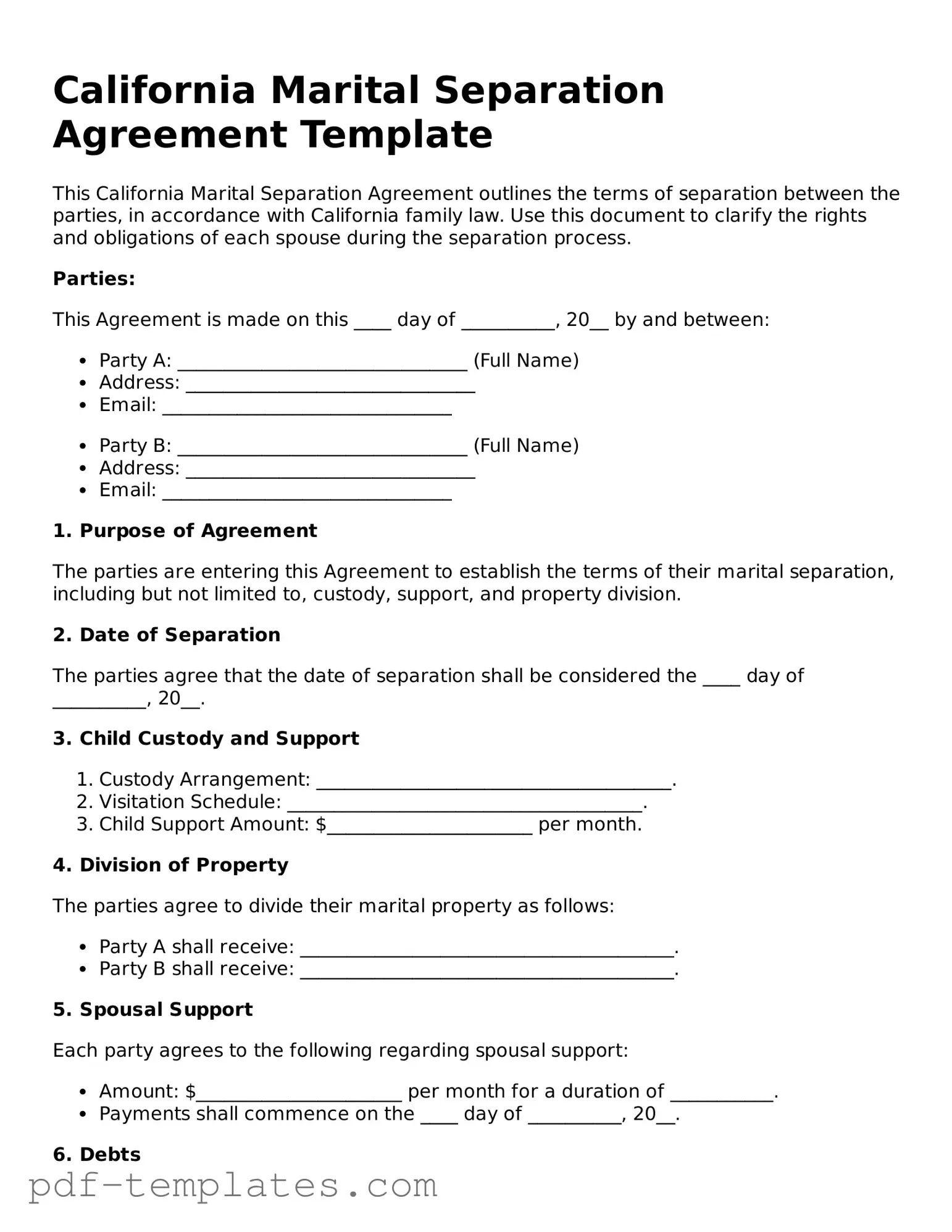The California Marital Separation Agreement is akin to a Divorce Settlement Agreement. Both documents outline the terms of how a couple will divide their assets, debts, and responsibilities after separating. While a marital separation agreement is used when the couple intends to live apart but not necessarily divorce, a divorce settlement finalizes the terms of the divorce. Both agreements serve to protect the rights of each party and provide clarity on financial and custodial arrangements.
Another similar document is the Child Custody Agreement. This agreement specifically focuses on the arrangements for the care and custody of children following a separation or divorce. Like the marital separation agreement, it addresses parenting time, decision-making responsibilities, and financial support. Both documents aim to ensure the best interests of the children are prioritized, providing a clear framework for co-parenting.
In navigating the complexities of rental agreements, it is crucial to utilize the appropriate documentation effectively. For landlords in California, the California Rental Application form is essential for screening potential tenants, ensuring that critical information about employment, rental history, and personal references is collected comprehensively. This pre-screening tool enhances the fairness of tenant evaluations, aligning with state housing regulations. Additionally, for those who may need access to various documents related to these processes, including the rental application, All California Forms is an invaluable resource.
The Property Settlement Agreement also shares similarities with the California Marital Separation Agreement. This document details how a couple will divide their property and debts. While the marital separation agreement may include broader terms regarding living arrangements and support, the property settlement focuses specifically on assets and liabilities. Both agreements seek to ensure fairness and clarity in the division of property.
A Cohabitation Agreement can be compared to the marital separation agreement as well. This document is used by couples who live together but are not married. It outlines how the couple will manage their finances and property during their cohabitation. Similar to a marital separation agreement, it can address the division of assets and responsibilities, helping to prevent disputes should the relationship end.
The Prenuptial Agreement also bears resemblance to the California Marital Separation Agreement. While a prenuptial agreement is established before marriage to outline asset division in the event of a divorce, it serves a similar purpose in defining the financial responsibilities and rights of each party. Both documents aim to provide a clear understanding of financial arrangements, reducing potential conflicts later on.
Lastly, the Separation Agreement in general terms can be seen as similar. This document can be used in various contexts, including marital separations, to outline the terms of separation. It typically covers issues such as support, property division, and custody arrangements. Like the California Marital Separation Agreement, it is designed to provide clarity and structure to the separation process, ensuring both parties are on the same page.
